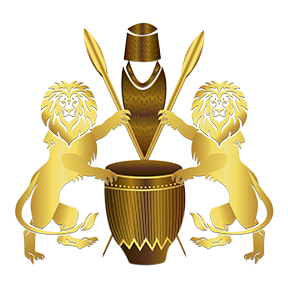The Marriage Ceremony
Marriage occupied an important position in the cultural life of the Batooro. A man would not be regarded as complete before he got married. Formerly, marriage would be arranged by the parents of the boy and the girl without their knowledge or consent. However, during the preparations of the marriage ceremony, the consent of the girl would have to be sought.
A middle-man was usually sought by the boy’s side and his role was socially recognized and rewarded. He was known as Kibonabuko. He had the duty of making investigations about the character of the girl, her family background and her ability to work. After such ground work was completed, the Kibonabuko would proceed to secure the girl from her parents on behalf of the boy’s family.
The Kibonabuko would wake up one morning and go to the girl’s family and declare his intentions to marry their daughter. He would make the following statement to the father of the girl:
“Sir, I come to you that you should build a house for me. I would like you to be part of my clan; I have come to ask for a wife, the builder of the house.
The normal response from the girl’s father was: I don’t have any child”.
The Kibonabuko would insist that the child was there, and on being asked who exactly he wanted, he would name the girl. If the father consented, the Kibonabuko would thankfully kneel down as a sign of appreciation. The next step would be for the boy’s family to take beer to the girl’s parents for the bride wealth to be fixed.
The bride wealth was normally in the form of cows. It varied between the Bahuma and the Bairu. For the Bahuma, it ranged from six to twenty cows. For the Bairu, the ceiling was about eight cows. They would often make payments in terms of goats and hoes. All or part of the bride wealth when due, would be received during a ceremony known as Okujuka. It was a very important ceremony involving a lot of eating, drinking and merry making. Thereafter, the young man’s family could send backcloth and some skins for the bride’s dress. Meanwhile other formalities would be finalized for the wedding.
On the wedding day, another big feast was organized. The bride would be collected around six or seven o’clock in the evening. Before leaving, she would first perform a ritual of sitting on her parents’ laps. This ritual is known as okubukara. She would then be lifted onto a litter and carried to the bridegroom’s home. On arrival, she would perform a ritual of being carried on her parent’s in–laws’ laps. There she would be sprinkled with some herbal water (endemezi) to welcome and bless her. Before the feasting started, the bridegroom would go to bed with the bride, to perform another ritual, okucwa amagita. Thereafter, the guests were given coffee berries, smoking pipes, beer and later food. If the girl was found to be a virgin during okucwa amagita, a gift of a cow or a goat would be sent to her mother to congratulate her on raising her daughter well. On the third day, the bride’s friends and relatives would give her gifts from home. They would come to see where she had been taken. The bride would spend some days in confinement and, at the end of it all, an elaborate ceremony would be held to bring the girl out and to initiate her into the art of cooking and housekeeping.
In the event of a divorce, bride wealth would be refunded. However, part of the bride wealth would be retained if the woman had already had some children with her husband.
CONTENT NEEDED
